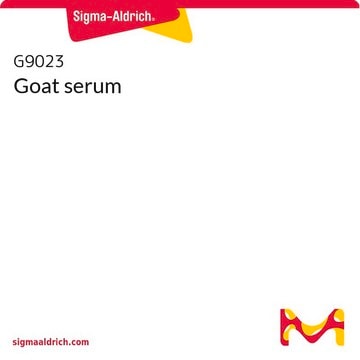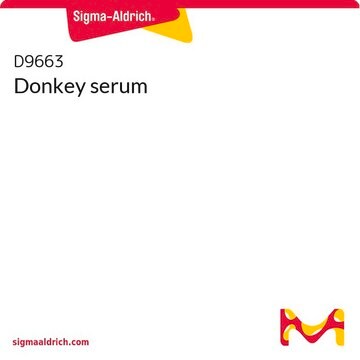Using P5282 with cells fixed in paraformaldehyde instead of methanol-free formaldehyde was attempted, but the results were not satisfactory with regular formaldehyde. A specific protocol for the reconstitution of Phalloidin P5282-.1MG in the case of tissues fixed in paraformaldehyde and included in O.C.T medium is not available. However, it is suggested to find relevant information in the literature, such as in this article, https://www.oncotarget.com/article/25259/ DOI:[10.18632/oncotarget.25259].
Wichtige Dokumente
P5282
Phalloidin Peptide
≥90% (HPLC), solid, FITC labeled
Synonym(e):
Phalloidin-FITC
Größe auswählen
About This Item
Empfohlene Produkte
Produktbezeichnung
Phalloidin-Fluoresceinisothiocyanat-Konjugat aus Amanita phalloides, sequence Amanita phalloides(synthetic: peptide sequence)
Biologische Quelle
sequence from Amanita phalloides (synthetic: peptide sequence)
Qualitätsniveau
Form
solid
Fluoreszenz
λex 495 nm; λem 520 nm(lit.)
Lagertemp.
−20°C
Allgemeine Beschreibung
Anwendung
- Zur Visualisierung der F-Aktin-Reorganisation in primären neonatalen Kardiomyozyten (PNCMs) und H9C2-Zellen (Herz-Myoblasten in Ratten) im Anschluss an eine Endothelin-1 (ET-1)- und Angiotensin II (Ang II)-Therapie.[3]
- In der Immunchemie zum Markieren von Mikrofilamenten.[4]
- In der Immunfluoreszenzanalyse zum Färben von F-Aktin.[5]
Biochem./physiol. Wirkung
Signalwort
Danger
H-Sätze
Gefahreneinstufungen
Acute Tox. 2 Dermal - Acute Tox. 2 Inhalation - Acute Tox. 2 Oral
Lagerklassenschlüssel
6.1A - Combustible acute toxic Cat. 1 and 2 / very toxic hazardous materials
WGK
WGK 3
Flammpunkt (°F)
Not applicable
Flammpunkt (°C)
Not applicable
Hier finden Sie alle aktuellen Versionen:
Analysenzertifikate (COA)
Die passende Version wird nicht angezeigt?
Wenn Sie eine bestimmte Version benötigen, können Sie anhand der Lot- oder Chargennummer nach einem spezifischen Zertifikat suchen.
Besitzen Sie dieses Produkt bereits?
In der Dokumentenbibliothek finden Sie die Dokumentation zu den Produkten, die Sie kürzlich erworben haben.
Kunden haben sich ebenfalls angesehen
Artikel
In the midst of beeping lab timers, presentations and grant deadlines, it is easy to take for granted the quality of lab reagents.
Verwandter Inhalt
Three-dimensional (3D) printing of biological tissue is rapidly becoming an integral part of tissue engineering.
-
Is it possible to use P5282 with cells fixed in paraformaldehyde instead of methanol-free formaldehyde?
1 Antwort-
Hilfreich?
-
-
How do I prepare stock solutions of Product P5282, Phalloidin, Fluorescein Isothiocyanate Labeled?
1 Antwort-
Stock solutions of phalloidin conjugates have been made in methanol or DMSO at 0.1 to 5 mg/mL. Make final dilutions in aqueous physiological buffers for a staining range from 0.1 μM to 100 μM with corresponding incubation times of 15 minutes to 72 hours.
Hilfreich?
-
-
How do I store Product P5282, Phalloidin, Fluorescein Isothiocyanate Labeled?
1 Antwort-
The product should be stored at a powder in the freezer at -20°C.
Hilfreich?
-
-
What is the Department of Transportation shipping information for this product?
1 Antwort-
Transportation information can be found in Section 14 of the product's (M)SDS.To access the shipping information for this material, use the link on the product detail page for the product.
Hilfreich?
-
-
How do I dissolve Product P5282, Phalloidin, Fluorescein Isothiocyanate Labeled?
1 Antwort-
This product is soluble in methanol, ethanol, butanol and pyridine. It is soluble in cold water at a concentration of 5 mg/mL; it is much more soluble in hot water. See: The chemicals encyclopedia published by the Royal Society of Chemistry, 12th ed., entry# 7336 (1996). Solutions should be prepared fresh, and protected from light whenever possible.
Hilfreich?
-
-
How do I stain cells with Product P5282, Phalloidin, Fluorescein Isothiocyanate Labeled?
1 Antwort-
A typical application for staining cells can be found in the product information sheet (under Documents, above).
Hilfreich?
-
-
What are the excitation and emission wavelengths used for fluorescent detection of Product P5282, Phalloidin, Fluorescein Isothiocyanate Labeled?
1 Antwort-
Excitation wavelengths of 540-545 nm and emission wavelengths of 570-573 nm can be used. See: Faulstich, H., J. Muscle Res. Cell Motility, 9, 370 (1988), and Waggoner, A. et al., Methods in Cell Biology, 30, 449 (1989).
Hilfreich?
-
Aktive Filter
Unser Team von Wissenschaftlern verfügt über Erfahrung in allen Forschungsbereichen einschließlich Life Science, Materialwissenschaften, chemischer Synthese, Chromatographie, Analytik und vielen mehr..
Setzen Sie sich mit dem technischen Dienst in Verbindung.









